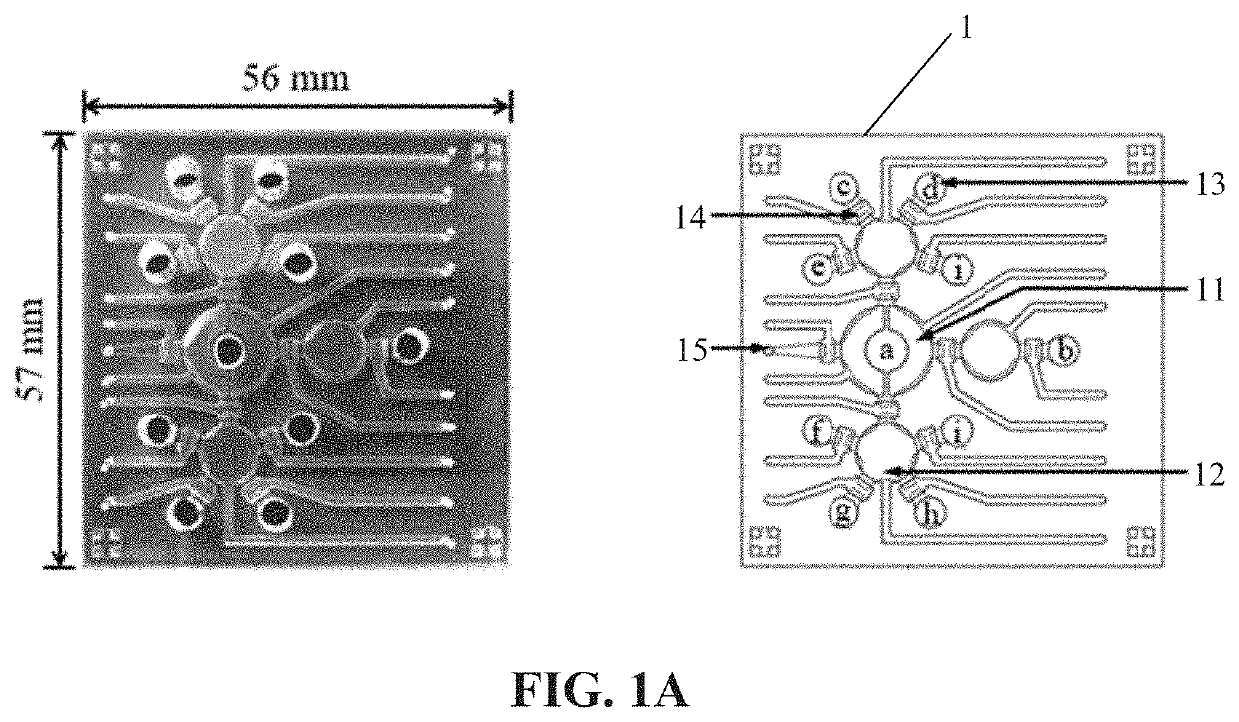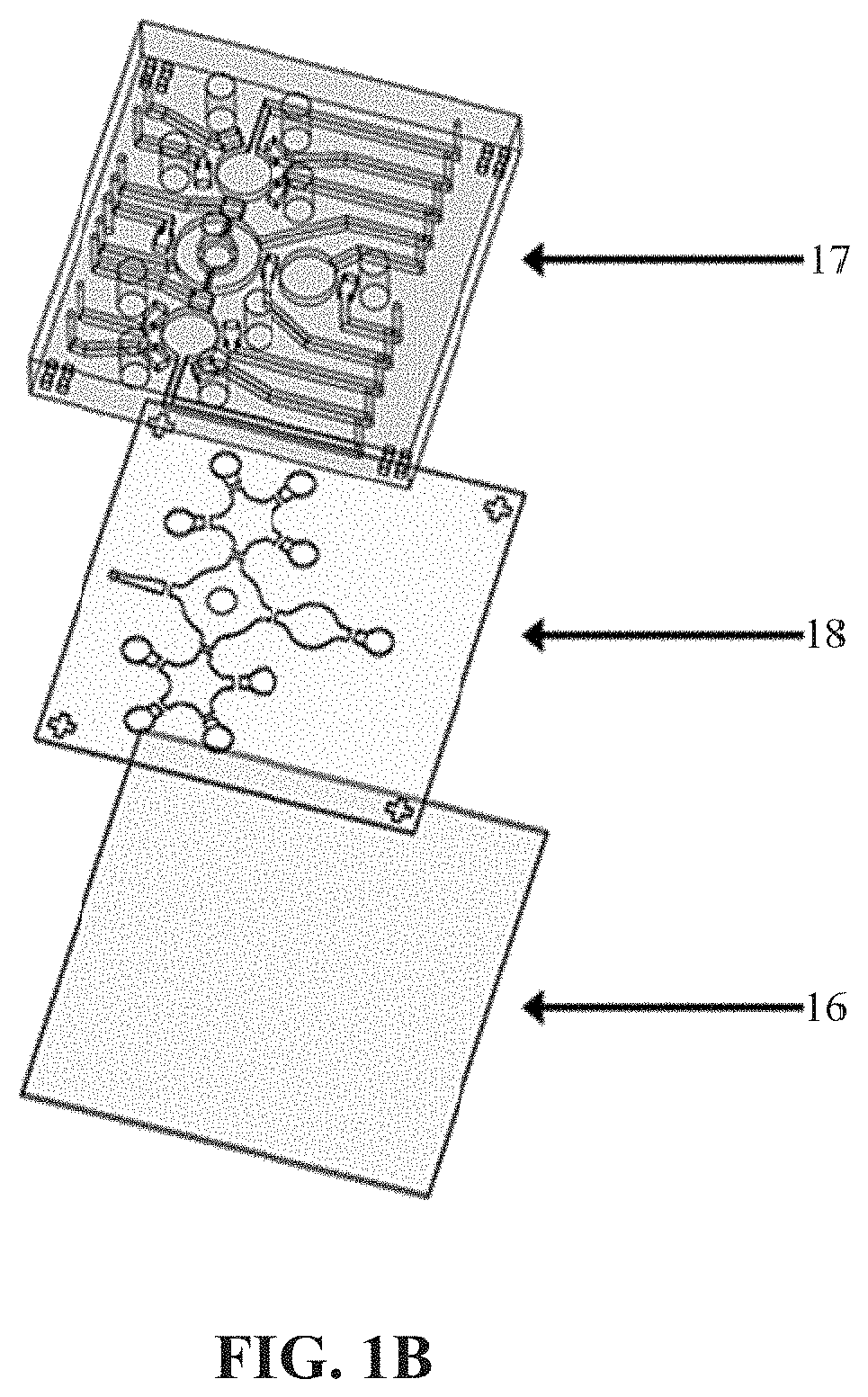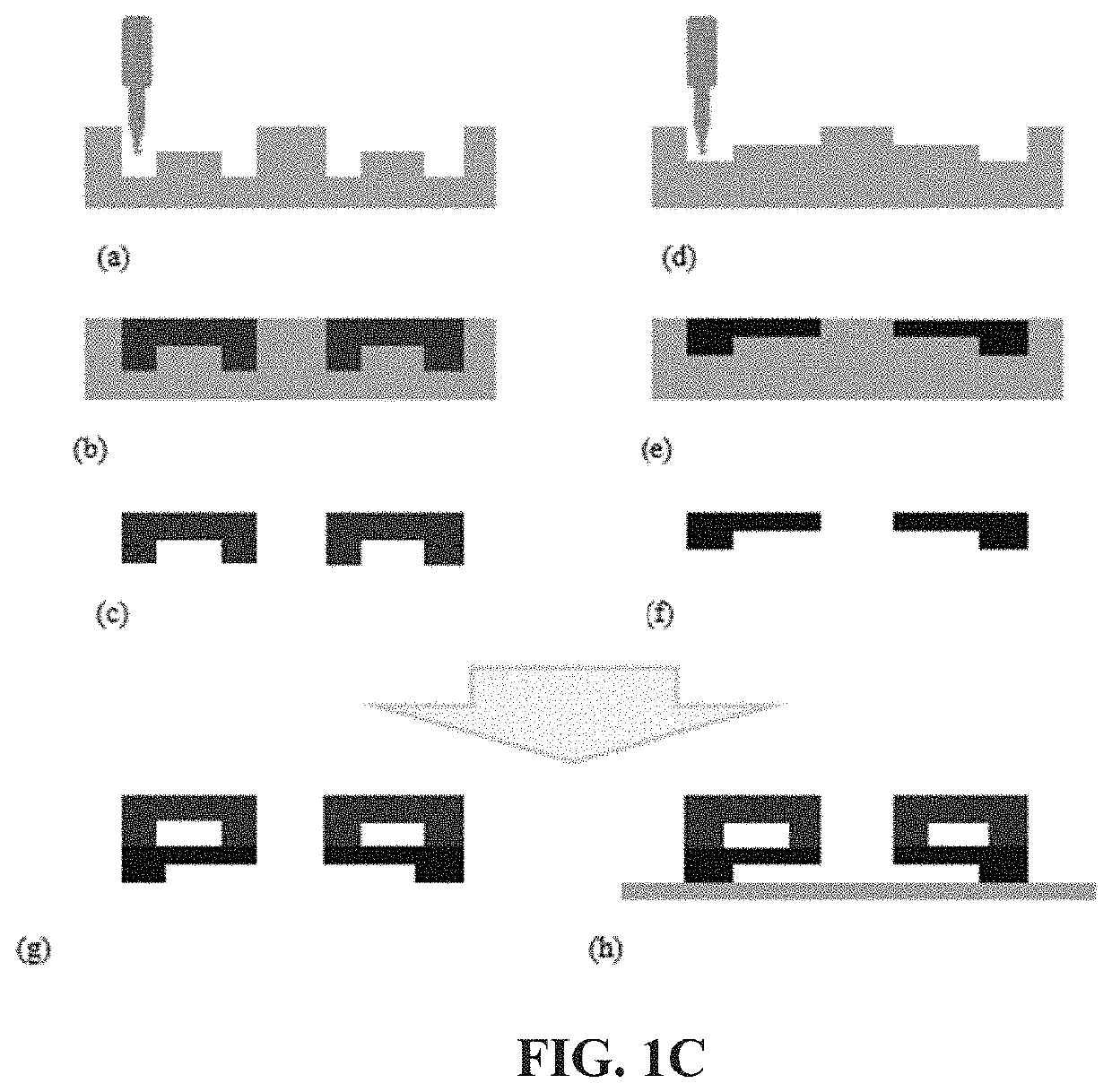Method for detecting cholangiocarcinoma cells
a technology of cholangiocarcinoma and cholangiocarcinoma cells, which is applied in the field of detecting cholangiocarcinoma cells, can solve the problems of difficult diagnosis and detection, poor prognosis, and obstructive jaundice, and achieve the effect of reducing the mixing time and high affinity
- Summary
- Abstract
- Description
- Claims
- Application Information
AI Technical Summary
Benefits of technology
Problems solved by technology
Method used
Image
Examples
example 1
Design and Fabrication of Microfluidic Chip
[0041]The microfluidic platform designed in this example includes a blood cell depletion module, a cancer cell isolation module and an IF staining module. The components on the microfluidic chip 1 are an open-type micromixer 11, a plurality of micropumps 12, eight reagent chambers 13 (including the symbols c, d, e, i, f, g, and h in FIG. 1A), a supernatant reservoir b, a plurality of normally-closed valves 14 and a waste outlet 15, shown in FIG. 1A, wherein a indicates blood sample, b indicates supernatant reservoir, c indicates octasaccharide-coated beads, d indicates CD45-coated beads, e indicates 4% paraformaldehyde, f indicates 0.1% Triton X-100, g indicates primary antibodies, h indicates secondary antibodies (Hoechst 33258), and i indicates wash buffer. The open-type micromixer 11, micropumps 12 and normally-closed valves 14 would be controlled by deforming membranes via applying positive and negative gauge pressures using programs an...
example 2
Operating Process on Automatic Microfluidic System
[0043]This example reported an integrated microfluidic system which could automatically perform WBC depletion, CCA cell isolation and IF staining. A whole blood sample (2-3 mL) spiked with 105 human cholangiocarcinoma cell line Huh28 cells (supplied by Division of Surgery, National Cheng Kung University Hospital, Taiwan) was pretreated by RBC lysis buffer for 5 mins first. After centrifuging at 1200 rpm for 5 mins and resuspending in 1×PBS (FIG. 2 (a)), the sample was loaded into the micromixer on microfluidic system to execute WBC depletion by Dynabeads® CD45 three times, wherein the Dynabeads® CD45 are CD45-coated beads. In brief, WBCs in the sample were incubated with Dynabeads® CD45 and the captured WBCs were collected by applying a magnet, the supernatant was transferred to the supernatant reservoir followed by washing out the gathered Dynabeads® CD45 and transferring the supernatant back to the micromixer (FIG. 2 (b)). After pe...
example 3
Performance of the Microfluidic System
[0044]In this example, the microfluidic chip for CCA cell detection consisted of several components such as micromixers, micropumps and microvalves. Before the entire on-chip experiments, the performances of the microfluidic chip including mixing index and shear force was measured, such that the optimum operating conditions could be applied on the microfluidic system.
3.1 Mixing Index of the Micromixer
[0045]In order to effectively incubate cells and octasaccharide-coated beads by the pneumatic micromixer, mixing index which could reflect the mixing efficiency of the micromixer was tested and calculated. The two liquid samples chosen for tests of mixing efficiency were 120 μL DI water and 5 μL blue ink. Gauge pressures from −100 to −500 mmHg were applied at driving frequencies of 1, 2 and 4 Hz to cause different mixing efficiencies. The entire operating process of the microfluidic chip was carried out at a constant gauge pressure of 51.7 mmHg on t...
PUM
| Property | Measurement | Unit |
|---|---|---|
| gauge pressure | aaaaa | aaaaa |
| pressure | aaaaa | aaaaa |
| detection time | aaaaa | aaaaa |
Abstract
Description
Claims
Application Information
 Login to View More
Login to View More - R&D
- Intellectual Property
- Life Sciences
- Materials
- Tech Scout
- Unparalleled Data Quality
- Higher Quality Content
- 60% Fewer Hallucinations
Browse by: Latest US Patents, China's latest patents, Technical Efficacy Thesaurus, Application Domain, Technology Topic, Popular Technical Reports.
© 2025 PatSnap. All rights reserved.Legal|Privacy policy|Modern Slavery Act Transparency Statement|Sitemap|About US| Contact US: help@patsnap.com



